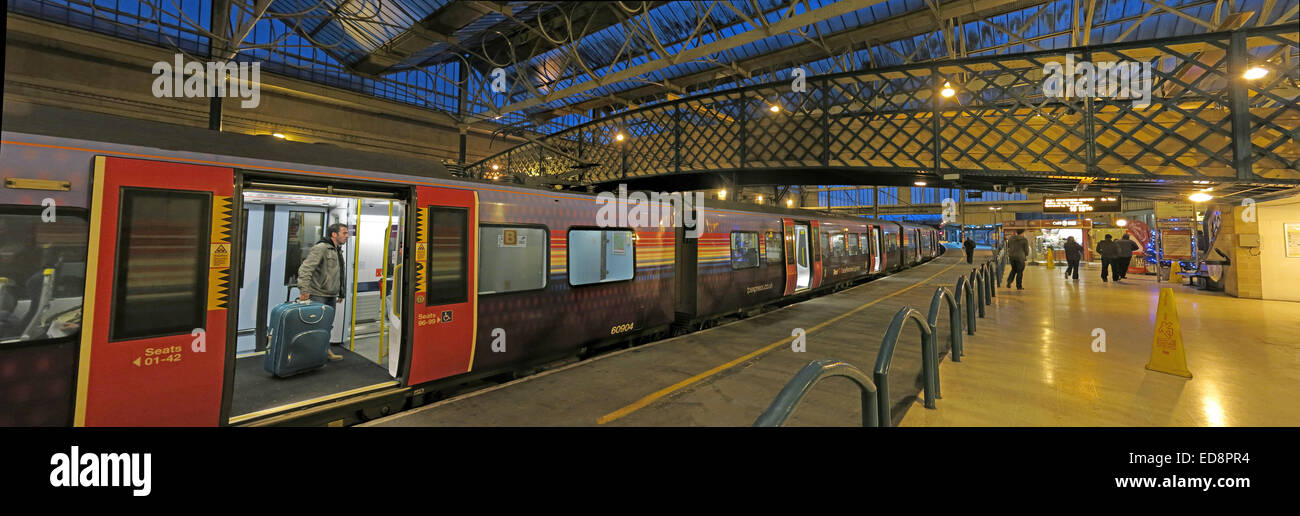Panorama of Carlisle Citadel, Railway Station at dusk, Cumbria, England, UK

Image details
Contributor:
Tony Smith / Alamy Stock PhotoImage ID:
ED8PR4File size:
88.8 MB (3.7 MB Compressed download)Releases:
Model - no | Property - noDo I need a release?Dimensions:
9726 x 3192 px | 82.3 x 27 cm | 32.4 x 10.6 inches | 300dpiDate taken:
11 December 2014Location:
Carlisle railway station, or Carlisle Citadel, Court Square, Carlisle, Cumbria, England, UK CA1 1QZMore information:
Carlisle railway station, also known as Carlisle Citadel station, is a railway station which serves the city of Carlisle, Cumbria, England, and is a major station on the West Coast Main Line, lying 102 miles (164 km) south of Glasgow Central, and 299 miles (481 km) north of London Euston. It is also the northern terminus of the celebrated Settle and Carlisle Line – notionally (and historically) a continuation of the Midland Main Line from Leeds, Sheffield and ultimately London St Pancras. It is a Grade II* listed building The station was built in 1847, in a neo-Tudor style to the designs of William Tite.[2] It was then one of a number of stations in the city - the others were at Crown Street (Maryport & Carlisle Railway) and London Road (Newcastle and Carlisle Railway) - but had become the main one by 1851; it was expanded and extended in 1875-1876, with the arrival of the Midland Railway (who became the seventh different company to serve it). The Beeching Axe fell with very significant rail closures including the former North British Railway lines to Silloth (closed on 7 September 1964) and Edinburgh via Galashiels (the Waverley Line, closed on 6 January 1969). The axe cut off the Castle Douglas and Dumfries Railway and Portpatrick Railway in 1965 resulting in an adverse mileage increase via the Glasgow South Western Line to reach Stranraer Harbour and thus Northern Ireland. The layout has also undergone few changes of any significance other than the singling of the ex-NER Tyne Valley route down to London Road Junction as part of the 1972-3 re-signalling scheme associated with WCML electrification.